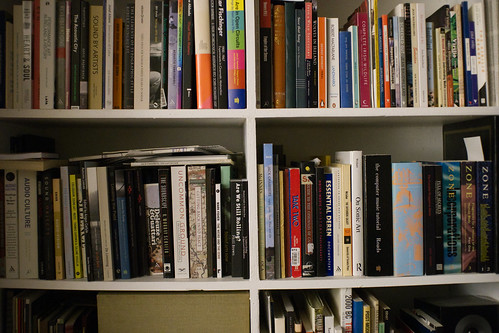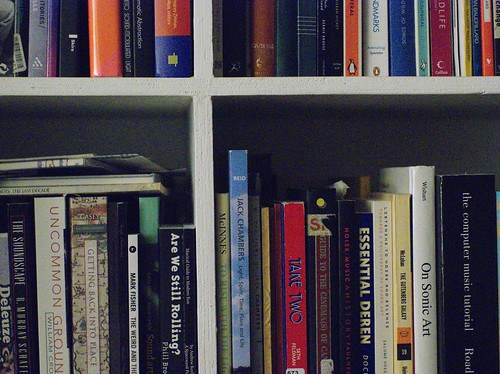The other day I stumbled upon a strange article entitled "Micro Four Thirds cameras are better at Low Light" by Mark Wieczorek. And since the Medium comment system makes coherent responses impossible, I decided to post a response here. This allows me a longer and more thoughtful response.
I will also present some test images, so read on for that.
The rebuttal
We can begin with empirical evidence. Cameras with larger sensors have demonstrably better low light capabilities, all else being equal. Millions of photos by tens of thousands of photographers attest to this. If you are going to call this a "myth", you'd better have compelling evidence!
But in order to justify that full-frame cameras work better in bright light, Wieczorek writes:
"The larger photosites of Full Frame cameras allows them to gather more photons. When do you need to gather more photons? During the day when there are more photons to gather."
The logic here is strange indeed. When there is plenty of light, there is no difficulty in gathering that light and forming a decent image. Any sensor will do, even the tiny one in your phone. But the technological challenge begins when there is less light.
"Having larger photosites allows the camera to operate at a lower base ISO. Having a lower base ISO makes them better for bright light situations."
While this may be true, it says nothing about low light situations, which is what the article is about (if we believe its title). Besides, base ISO does not correspond to sensor size. In the default mode, my Lumix S5 also has a base ISO of 100. So at best this statement is a non sequitur.
Having larger photosites means that each site on the sensor gathers more light, but this has no direct correspondence with the ISO you are using. ISO concerns how much gain is required to get to the desired exposure level. The base ISO is an engineering decision that cannot be compared across cameras. It is wrong to attach further significance to these numbers.
When changing ISO, what matters to photographers is a) how much noise is introduced into the image and b) how much usage dynamic range is available. Below I will test the first property.
To quantify light gathering, we need to compare the sensor area to the number of photosites. This allows a calculation of the pixel area for each. My full-frame camera (Lumix DC-S5) has a sensor area of 847.28 mm² in which there are 24.2 Megapixels. The pixel area is hence 34.93 µm². My MFT camera (PEN E-P5) has sensor area 224.90 mm² and 16.10 Megapixels for a pixel area of 13.99 µm². So each site on the FF camera is gathering 50% more light. Other cameras will be different, as manufacturers trade off capturing detail (more pixels) vs. low-light performance (fewer pixels).
But knowing that I have 50% more light per photosite doesn't tell me how much better (in terms of noise, dynamic range, etc.) my camera is, since different cameras have different engineered components and pipelines. Factors such as the level of temporal dark noise, presence of back illumination, and processing power all matter. Manufacturers themselves compile information on such subjects in their engineering white papers (example) so there's no need to guess how this works.
In response to a previous comment, Wieczorek erroneously claimed that the total light received is not a function of the sensor size but of the lens. But if I use a FF lens on an MFT system (which I do!) then the smaller sensor does not magically get more light. Only the central part of the lens' image circle will be used. The rest of the glass does nothing... because the sensor is not large enough to gather all the light the lens transmits.
Back in the article, the author continues with daylight / night-time examples that point to practicalities of shooting, but say nothing about low light quality. Ditto the example from Black Swan. The discussions of aperture are also off topic. None of these diversions address the topic. All they say is that some cameras (and some camera settings) are better for certain types of photography or cinematography. I think we can agree to that!
A sensor noise test
Wieczorek argues without presenting a single image, but I don't wish to repeat that error. So I made some test shots in a dark living room, using the Pentax FA Limited 43mm lens adapted to two camera systems. To represent full-frame I used my Lumix S5 and for micro-four thirds (MFT) my Olympus PEN E-P5. Certainly these are two different generations of cameras, but they are what I have available. I do not claim that this is a scientific test, only an indicative test. A fully fair comparison would require two cameras identical in every way except their sensor size.
Please note that this is not a test of equivalence. I realise that no matter how large I write that statement, readers are going to get confused. I am fully aware that in order to get the same shot I need to match field of view, depth of field, and exposure. Since the MFT sensor is half the size of the FF sensor, the "crop factor" is 2. This means that a 50mm lens shooting at f/4 and ISO 1600 on full-frame requires a 25mm lens (to match FOV) shooting at f/2 (to match DOF) and ISO 400 (to match exposure) on MFT.
But that is not the test I am conducting. I am not trying to get the same shot, since no photographer is ever trying to match some other camera system when they are doing real work. Instead, I am trying to get the best shot possible in the circumstance.
Consider shooting a gig in low light. An aperture of f/2.8 is required to get as much light as possible. Though any less than that and the DOF will be too small to accurately capture action on stage. I can move around, so I don't care about FOV. If I want the subject bigger in the frame I simply step forward. Since I need to hold the camera by hand, I won't set the shutter speed to slower than 1/30 of a second. (IBIS will handle it.) This is a typical low light scenario.
For my test, some of the parameters were held constant. I used a tripod and timer. I shot an unmoving subject (my bookshelf). I developed images without any processing. Using a non-native lens from a different mount ensured that neither the camera nor the software could perform any magical invisible corrections. Besides, this was the only way to get the same optic on both systems.
Here's the FF image at ISO 25,600. I was not directly parallel to the shelf, so the angles are a bit off. Also, the shelves are in reality not straight under the weight of all those books!

And here's the MFT image at the same ISO. The field of view is obviously different. The exposure is poorer, since the Lumix is much better at that task. Ignoring these facts, the noise, even at this reduced size, is obvious. (You should click through to Flickr to enlarge the shots.)

But to make it easier, here's a crop 1600 pixels square from the FF image.

And here's the same from the MFT image.

Finally, for completeness, we can match the FOV and then compare. The FF image:

The MFT image:

Conclusions
So long as we have enough light, we might choose to use a smaller sensor camera for various reasons: convenience, compactness, etc. But if we want good low light performance, we need a larger sensor with larger individual photosites. Engineering, logic, and our eyes all support this contention.
A larger sensor also often comes with a better image pipeline. So photos might well have more natural colours, better exposure, and other qualities. All of these are evident in the sample shots above... as they are also evident in my everyday shooting.
6 comments:
Hi there! I totally agree with you on this one. I just ordered a S5D with the 18-40mm kit lens and the S 50mm f1.8. Can't wait until it is delivered. For many years I have used my GH3 for video mostly with the Lumix G 12-35mm f2.8, which is extremely sharp. I also have some vintage manual lenses: Autochinon 55mm f1.7 and Autochinon 35mm f2.8, and the 135mm f2.8. These lenses are cheap, but produce a unique analogue image. They are not very sharp, though. My plan is to use them with my S5d as well.
My default travel setup is a Panasonic GX9 with that same 12-35. Even though I dislike using zooms, it is so practical and fits anywhere.
What will the difference be if I want to achieve the same depth of field? This is important, for example, when taking group photos, and you want both the first and second rows to be in focus.
Jos, I am not sure if I understand your question, since DOF is not directly related to the issues in this article. In general, if you want greater DOF then you stop down the aperture, say from f/2.8 to f/4. Since you now have half the light on the sensor you might need to compensate ISO to ensure the same exposure, say from ISO 800 to 1600.
If you are more interested in the equivalence of different camera systems, I recommend you read my detailed article here:
https://www.theatreofnoise.com/2023/12/photographic-equivalence.html
You understood my question correctly. Indeed, to achieve the same depth of field in full-frame, you need to double the ISO. And then it would be interesting to compare the noise levels between a modern M43 sensor like the one in the OM-1 and a full-frame camera. I think you'll see very small differences.
The differences are not small but clearly visible. Though of course it depends on the actual sensor, pixel density, etc. But all tests I have read (and my own) come to the same conclusion. A larger sensor is simply better, as one might logically assume from physics. A digital medium format camera is better again than FF, with a clarity that can be quite astounding. Of course one pays the price in size, weight, and cold hard cash.
Post a Comment